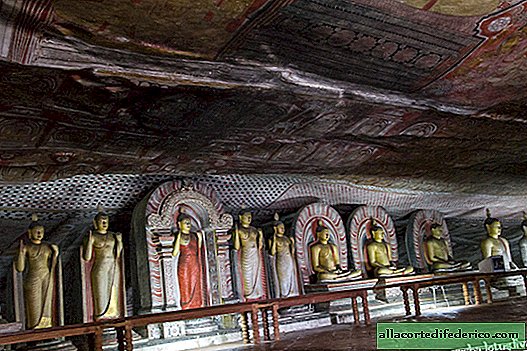When in the Arabian desert do rivers murmur and forests make noise?
The climate of the Earth has not always been the same as we observe it today. Under the influence of external and internal factors, it undergoes significant changes. Where there were blooming oases, endless deserts now stretch, and powerful coniferous forests stretch in place of the icy ocean.
Sudden changes are often catastrophic and are caused, as a rule, by the action of external forces: a sharp increase in solar activity, a meeting with meteorites. Changes under the influence of internal processes occur gradually and are often cyclical. For example, the stages of warming and desiccation (aridization) of the climate are replaced by cooling and back after a certain period of time.

About a third of the surface of the globe is occupied by deserts and semi-deserts. But these are not always lifeless spaces. For example, in the territory of the modern Middle East, one of the largest desert regions, about 250 million people live. Of course, the arid climate causes great difficulties in the process of providing the population with water and food. Researchers from different countries are trying to find out how deep these changes are and how long the dry period in the Middle Eastern countries will last.
To restore the climatic picture of past days, scientists are exploring mineral formations (stalagmites) in one of the caves in Iran. They are obtained as a result of the hardening of drops falling from the ceiling of the cave. The formation of these rocks has been going on almost continuously for many thousands of years. This is a kind of "account book" that stores data about each period of life of the stalagmite.
It turned out that these amazing cave formations can tell the world a lot of interesting things. For example, by measuring the content of a particular chemical element in different layers of stalagmite, it is possible to determine what was the average air temperature in that period, the intensity of solar radiation, and the amount of precipitation. Based on the data obtained, scientists reconstructed the climate picture in the Middle East over the past 130 thousand years.
It turned out that the climate of this area underwent significant changes every few thousand years. It became drier and hotter, then moderately warm, but more humid. Such cyclical fluctuations, according to scientists, are consistent with the information obtained by studying the climate of other territories of our planet. Thus, it turns out that climate change is not point-like in nature, but subject to planetary laws.

As for the Middle East, the conclusions of scientists are still unfavorable. Recent studies show that this territory has relatively recently entered a phase of warming and desiccation of the climate, which will last for about 10,000 years. Therefore, full-flowing rivers and tropical forests can contemplate only the distant descendants of the inhabitants of this region.

















